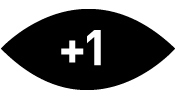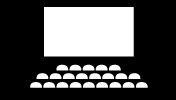

The year after the appealingly youthful, wide-eyed, slightly left-wing cold-war fantasy thriller WarGames came out, its pumped-up, Bro-eyer older brother was unleashed. Red Dawn is a youthful, severely earnest, right-wing cold-war fantasy about a group of teenagers who take to the mountains and become guerilla fighters after an unprovoked military invasion of the United States. This invasion by a hodgepodge of Soviet and Communist Latin American forces seemed to many in 1984 to be just as plausible a scenario as our overly computerized defense system deciding on its own to launch a nuclear attack on Russia.
The film comes courtesy of the greatest right-wing, gun-nut, military interventionist Hollywood writer of all time, John Milius—screenwriter of Apocalypse Now and Conan the Barbarian, The Life and Times of Judge Roy Bean and Jeremiah Johnson, Magnum Force and Dillinger, The Wind and the Lion, Farewell to the King, and Geronimo: An American Legend, as well as a primary contributor to Robert Shaw's iconic Indianapolis speech in Jaws, Sean Connery's rousing, "We sail into history" speech in The Hunt for Red October, and Clint Eastwood's "I shoot the bastard" exchange in Dirty Harry. As a young man, Milius wanted more than anything to join the Marine Corps and fight in the Vietnam War, but when the pudgy, bearded, cigar-chomping He-man attempted to join up in the late 1960s, he was rejected due to chronic asthma. Unable to fight in the real war, the writer/director lived out his fantasies on screen, often with surprisingly satisfying results. The intelligence behind so many of his screenplays comes from Milius being a serious student of history who often wrote intelligently about war. However, his work was always best when he was collaborating with a strong director, producer, or star. When he's the whole show, his films get a little untethered.
Such is the case with Red Dawn, which arrived on screen mid-August in 1984, just two months before Ronald Reagan won re-election in a landslide victory against former Vice President Walter Mondale. The public ate up the movie's noble, red-blooded, jingoistic propaganda, which was packaged and delivered by a group of up-and-coming young actors. Patrick Swayze and C. Thomas Howell, who had co-starred in The Outsiders in 1983 and Grandview, U.S.A., released just a week before this film came out, head up a cast featuring Lea Thompson, Charlie Sheen, Darren Dalton, Brad Savage, and Jennifer Grey. The kids who hide out in the forests of Soviet-occupied Colorado and launch shockingly successful sneak attacks on the Russian, Cuban, and Nicaraguan invaders call themselves "the Wolverines" after their high school mascot. These juvenile soldiers represent America's fighting spirit and the heroism of those who fight for their homeland, even though they are outnumbered and outgunned. Red Dawn capitalizes on the fantasies most teenage American boys have of hiding out in the woods, taking on an enemy with nothing but guns, survival skills, and patriotic bravery. It also shows the ultimate futility of that fantasy.
The script, initially called Ten Soldiers, started out as an anti-war drama written on spec by Kevin Reynolds, who hoped to make it his directorial debut. When that didn't happen, he sold the script to producer Barry Beckerman and went to make the Steven Spielberg-produced Fandango in 1985, which starred another group of hot young up-and-comers—Kevin Costner, Judd Nelson, Sam Robards, and Suzy Amis. That charming 1970s period piece launched Reynolds's long but fraught friendship with Costner, who brought him on to direct the buffalo stampede scene in Dances with Wolves and helm the massive Robin Hood: Prince of Thieves and the notorious runaway production Waterworld. Reynolds' script was written as a low-budget picture that could be made with unknowns. Thus, it featured far fewer scenes of battle and blowing up tanks than of kids working through their frightening situation and working through their interpersonal conflicts.
By 1984, Former Nixon chief of staff General Alexander Haig had joined the board of MGM and was excited to personally supervise a war film. Haig brought Milius on board, and the two set out to turn Reynolds's little indie movie script into something bigger and better. By this point, everyone in Hollywood had read James Cameron's screenplay for Rambo, and Haig believed Milius and a larger budget could transform Ten Soldiers from a teenage First Blood into a teenage Rambo. Haig apparently took Milius to the conservative think tank The Hudson Institute, where they developed a backstory for the film's fictional invasion, supposedly based on a plan by Adolph Hitler to invade the U.S. during World War II. Their time would have been better spent developing the characters or figuring out how to maintain the narrative dynamics in Reynolds' script while adding in all the battle scenes. I'd be curious to read Reynolds' original draft and Milius's shooting script, as I would venture they are both far better than the resulting picture. Red Dawn is a choppy, messy picture that feels like huge chunks have been randomly excised from it, leaving a hollow and disconnected jumble of awkward dramatic scenes and impressive but not especially believable set pieces with big explosions.
A lot of pointed commentary still exists in the movie, such as the shot of a truck bumper sticker that says, "They can have my gun when they pry it from my cold dead fingers," which pans down to a dead American having his gun pried from his cold dead figures by one of the invaders. There are several unmistakably Millus-touches in the movie, such as multiple references to Theodore Roosevelt and the way the Wolverines are presented as part of a long, proud tradition of domestic partisan fighters who fight against a foreign army of occupation (even if that army happened to be American). Whereas Haig and others might have seen this story in terms of good vs evil, Millus clearly admires the character of Colonel Ernesto Bella, a Cuban Revolutionary played by Ron O'Neal. Unfortunately, like everything else in the picture, these subtleties are so clumsily handled that they make us laugh rather than think. Take Colonel Bella wishing Swayze's Jed Eckert and Howell's Robert Morris "Vaya con Dios" after sparing their lives at one point as a way of differentiating the honorable former Cuban revolutionary from his cold, soulless Russian allies.
Swayze and Howell's characters are the only ones who get anything resembling an arc over the course of this movie. The other boys start out with distinct personalities or at least archetypal qualities, but they quickly become interchangeable—thank goodness Charlie Shene plays Swayze's little brother so we can keep track of who he is. The two young women who join the Wolverines have backstories that come and go randomly. Lea Thompson's Erica Mason was clearly written to have an arc that would transform her from a fragile, almost mute, emotionally abused girl into a rugged, hard-boild soldier. But as presented in the film's final cut, it seems as if on some shooting days, Thompson was directed to play Erica as a traumatized girl, and some days, she was told to play her as just one of the gang.
A couple of seasoned actors show up in smaller roles, notably Ben Johnson, who plays an old rancher who provides the gang with advice, news, food, and weapons. Who he is, where he and his wife live in relation to the town overrun by enemy forces, and many other aspects of his character are unclear, but he's Ben Johnson, so we let it slide. Harry Dean Stanton plays Swayze and Sheen's tough, patriotic father, Tom Eckert, who is interned in a make-shift re-education camp converted from the town's drive-in with other potentially disruptive townsfolk who were stupid enough to register their firearms. His farewell, "don't shed no tears" scene with his sons is enough to make the "real men" in the audience all choke back tears, but Stanton makes a far far more lasting impression in his other 1984 pictures, Repo Man and Paris, Texas.
Most of the cast apparently did not love playing soldier with Milius during a cold winter in and around Las Vegas, New Mexico. Grey and Swayze famously disliked each other throughout the production, making their incredible on-screen chemistry in Dirty Dancing three years later all the more astonishing. Thompson has claimed the main reason that she did the movie was because of a well-written subplot, a romantic and sexual relationship between her teenage character and thirty-six-year-old Powers Boothe, who plays an Air Force Lt. Colonel who joins the Wolverines for a while after his plane is shot down. Their love scene was cut when preview audiences were disturbed by the age difference between the two actors (this was 1984, so that must have been quite a scene to upset the blunt sensitivities of that era's audiences). Boothe was apparently also unhappy with the way the final film cut the emotional center of his character.
The progression of that relationship is one of many narrative lines that seem to happen off-screen. The most egregious of these is when Darren Dalton's character, Daryl, betrays the others after his corrupt, spineless politician father (Lane Smith) betrays him. Since Daryl's character is so underdeveloped, we barely remember who he is at a key moment when Soviet troops are able to pinpoint the group's position in the forests because of Daryl's traitorous behavior. As this pivotal sequence unfolds, you get the feeling the projectionist must have skipped a reel or something. Red Dawn was cut by British editor Thom Noble, whose first credit as film editor was François Truffaut's Fahrenheit 451, and who would go on to cut Witness, Thelma & Louise, and The Hudsucker Proxy, as well as a lot of notoriously troubled productions like The Exorcist III, Body of Evidence, and the 1996 version of The Island of Dr. Moreau.
Red Dawn has the feeling of a troubled production that wasn't able to be fixed in post. But, I think the project is illustrative of the leadership style of men like Millius, who love the idea of command and are extremely good at devising intricate scenarios, but have little patience for the critical actual nuts and bolts details of actual leadership. I'm sure Millius loves being a director in charge of a film crew battalion staging mighty scenes of combat—he's famous for the stipulation in his contracts that part of his salary for any film he writes is to be a specific gun for his collection, and when directing he's known for wearing a working handgun loaded with blanks on set so that he can storm off and fire a few rounds when things get frustrating. But the hard work of executing complex logistical set-ups, running endless dailies, and spending countless days in an editing suite, sound mixing studio, or scoring stage is far less interesting to him, and it shows in the films where he is both a writer and director.
The film Red Dawn has been pretty much forgotten in most film circles. A remake was released in 2012 that took place in the 2010s with North Korea invading the US instead of Russia, but it was a box office flop panned by most everyone, including Milius. However, like WarGames, the title and the idea of Red Dawn have lived on in the minds of many, including several military officials who came of age in the 1980s. In fact, the mission that successfully captured Saddam Hussein was dubbed Operation Red Dawn. It's a pop culture touchstone as well. In the 2010 Steve Pink/John Cusack comedy Hot Tub Time Machine, when the characters meet someone from 1984, the filmmakers made him a Red Dawn-obsessed movie fan. The picture will also always be remembered as the very first film released with a PG-13 rating. After so many violent, racy, scary, and intense 1984 films came out, ranging from Indiana Jones and the Temple of Doom to Gremlins to Sixteen Candles, parent groups in '84 demanded the MPAA create a new classification that warned them about potentially strong content in movies that didn't merit an R. Though the violence is pretty tame by today's standards, at the time Red Dawn was released it was considered one of the most violent movies ever made—an absurd claim. In its own clumsy way, Red Dawn certainly has more realism and more to say about the effects of war on human beings than the myriad PG-13 movies, with their bloodless violence and crotchless sex, that would define so much of mainstream filmmaking in the decades that followed.
John Milius' right-wing cold-war fantasy about a group of teenage guerillas who take on occupying force of Commuinst invaders lacks enough depth and cohearance for its themes of noble partisan freedom fighters to resonate.






